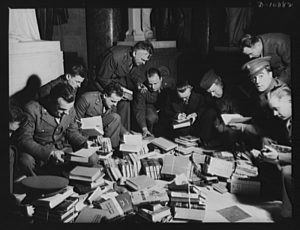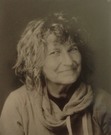Barb Drummond's Blog, page 2
February 2, 2018
A Ghost Story
This film stars Casey Affleck and Rooney Mara and is directed by David Lowry so reunites them after Aint them Bodies Saints and is one of the strangest, most haunting films I’ve ever seen. Yes, I know there are issues with Affleck, but there are a lot of cast and crew involved in this, so I can’t see any point in punishing them.
It’s a very quiet film, a sow burner with not a lot of dialogue, so is in some ways a very old fashioned tale, of visual story telling.
For most of the film Affleck is a ghost covered in a sheet, which seems really corny but there are moments when this simple image takes on surprising forms. He is walking across a flat, green landscape and there is something so graceful, so .. it’s hard to explain. He is a man in a sheet, yet the billowing fabric makes him seem saintlike – almost godlike at times. At other moments he is also like a madonna.
He is stuck in a house. After he dies, his wife is given a pie. She starts eating it, and eats… she’s voracious. This is how she grieves. It’s incredible. There’s another ghost next door, but in a floral sheet, so suggests this is a woman of a certain age.
This is such a hard film to review because not a lot happens, and yet there is a lot going on. The ghost is invisible, yet trapped within the house.
Thoroughly original, haunting, highly recommended.
[image error]
December 24, 2017
Apologies for the silence
Sorry to all my lovely followers. I have now completed 3 books which will all be released in dazzling print and ebooks in September 2018. they are:
MR BRIDGES’ ENLIGHTENMENT MACHINE: Forty Years on Tour in Georgian Britain
FROLICKSOME WOMEN & TROUBLESOME WIVES: Wife Selling in England
THE MIDAS OF MANUMISSION: The Orphan Samuel Gist and his Virginian Slaves
More books will follow. Eventually
October 21, 2017
Me in Tin Type
I hate having my photo taken but the chance of being immortalised in a mid 19th century technology was irresistible. Magical watching the image slowly appear, hair first. The photo is by Gareth Jarvis[image error]
October 10, 2017
The Soldiers’ Pocket Books That Legitimized Paperbacks
Even though pamphlets and softcover books have been available in Europe since the 16th century, US readers looked down on them until well into the 20th century. As a recent Atlas Obscura post by Cara Giaimo explains, without a mass-market distribution model in place, it was difficult to make money selling inexpensive books.
Although certain brands succeeded by partnering with department stores, individual booksellers preferred to stock their shops with sturdier, better-looking hardbacks, for which they could charge higher prices. Even those who were trying to change the public’s mind bought into this prejudice: one paperback series, Modern Age Books, disguised its offerings as hardcovers, adding dust jackets and protective cardboard sleeves. They, too, couldn’t hack it in the market, and the company folded in the 1940s.
Wartime Reading
 Soldiers in Virginia wrangle with hardcover books donated through the VBC. Image via Atlas Obscura.
Soldiers in Virginia wrangle with hardcover books donated through the VBC. Image via Atlas Obscura.
Then, war came. In September of…
View original post 1,156 more words
October 7, 2017
Curiosities at Gloucester Folk Museum
Sometimes I find references to items which I really need to see to understand. Fortunately some museums have handling exhibitions which help. This was a Tudor exhibit at the recent doors open day.
This is a trencher, a precursor of plates. It’s only a few inches across as they did not have all the food on a plate a the same time
[image error]
This is a bone book, another mystery to me. I’d imagined it was a series of pages, but it has tex on 2 sides, a primer for basic reading skills. Here showing the alphabet and Lord’s Prayer
[image error]
This reminded me of a hook for rugmaking, but it is a tool for carpenters to mark their work to ensure they were paid.
[image error]
This is different. From the children’s toy section. I wish I’d had a pram like this when I was little. This is lovely. Don’t think those wheels can turn corners though.
[image error]
October 6, 2017
Kittiwakes
When I saw these birds nesting in Newcastle my reaction was my usual anoyance at the ubiquitous urban gulls. But these are pretty little creatures who spend most of their time at sea. Also they are in decline, so great to see them breeding in the summer at the Gateshead Gallery on Tyneside
[image error]
[image error]
September 30, 2017
Tapestry Here & Now Holburne Museum
Apologies for posting this so late – I think it ends today, but it was a fine mix of styles, a reminder there are still original things you can do with a few threads. I’m afraid I can’t read my scrawled notes for some of them.
[image error]
[image error]
[image error]
This seemed to be my favourite, a Japanese artist on tour in Latvia. So much detail – cats and some Reservoir Dogs
[image error]
[image error]
[image error]This one I do remember: ‘Golden Shower’ by Aino Kajaniemi from Finland. Bit of a cultural problem with the title.
[image error]
This is rather wonderful too. think it’s Roland Krutovs from Latvia, ‘Propera and Me’
[image error]
[image error]
This is Valerie Kirk from Australia, ‘Floating Fossil’
[image error]
This is great, too. Magical!
[image error]
This hangs free, instead of being mounted on a board so it has a 3 d quality to it in addition to the design per se.
[image error]
This is a close up to show the many different types of stitching applique etc.
[image error]
[image error]
This shows the past and future. Great to see sci fi in an old art form
[image error]
September 26, 2017
Listen To Britain 75th Anniversary
This is an incredibly famous documentary made in the dark days of World War II by Humphrey Jennings as a means of uniting the United Kingdom. I’d heard a lot about it but never seen it before. Documentary maker Kevin Macdonald introduced it, describing it as a masterpiece; it is that and more.
There is no narration, mostly natural sounds, a day in the life of a nation. We see men harvesting in the fields beside others in uniform gazing at the skies with their binoculars. An extraordinarily crowded ballroom, the men mostly in uniform, a whirlpool of couples dancing. A concert including The Bartered Bride at the National Gallery with the queen in attendance. Windows were sandbagged, there were a lot of empty frames, but several times we see the painting of Gainsborough’s daughters. A man in a suit walking to work past damaged and sandbagged buildings with a helmet strung from his suitcase. The surreal becomes normal. A soprano singing at a piano while women sit in silence in a big old building – a basement for shelter? Flanagan and Allan sharing a microphone, then the audience packed into an aircraft hangar whistle along with them. Big Ben hidden by scaffolding, glimpses of Nelson atop his column. There is a real sense of ordinary and the less than ordinary in time of crisis. utterly beguiling.
As Macdonald said, Jennings showed documentary could be a real art, poetry, as finely crafted or more so than any feature film. He clearly loved his subjects.
To celebrate the 75th anniversary of this film, the British Film Institute commissioned 12 short films. It seemed to me this is an opportune time, with Britain struggling to survive attack – not from wartime enemies but from multinationals and incompetent leadership in general.
Accent Louder than Words followed a Polish woman who has lived here for decades but sought help with her accent as she is now being insulted for it.
Listening to Bridgeton was set in an old bus garage scattered with old beasts being brought back to life. Voiceovers were from men describing the restoration, but also the damaged men who worked there, who found that stripping the bus down and building it up again helped them do the same to themselves.
Maesteg followed a taxi driver round this isolated Welsh town, talking to locals of how the once flourishing area is dying in the shadow of closed coal mines and iron works.
Eric was about a therapy dog who visits people – mostly elderly – in institutions, where they stroke him and talk to him. He is the most important person in their lives.
Portrait of the Artist As a Young Woman followed a woman with Downs Syndrome who has become a prolific poet.
That Yorkshire Sound was probably the closest to the spirit of Jennings, a scribbled cartoon with music showing snatches of Yorkshire life – kids playing, horse riding, drunks fighting etc. A lot of fast, jerky action, but good.
Silent Rooms was about young gay coloured people bemoaning their invisibility in the media.
In Other Words followed 3 young poets, ending with an extended performance of their work.
Learning to Swim was about a woman who takes in young single male refugees and helps them settle in.
From HK to MK was made by the son of a Hong Kong immigrant. It follows the retired dentist round Milton Keynes, discussing new towns and identity.
The final one, Voices of Britain by Alex Campbell definitely followed Jennings’ footsteps. But with words. “We are not really listening to each other and that can cause a lot of problems… You’ve got a lot more time than you think you’ve got. What is your life if you have no time to stop. Sorry, I was starting to fade by the end of this.
Sitting through over 2 hours of uninterrupted short films was a stretch, so apologies for the brief summaries of the works. they were all worthy, some funny, a few challenging, but some felt more like promotions of minority interest rather than attempting to put them into a national context. I tend to think film should be more visual than verbal, though this is a problem when you are dealing with poetry. Jennings’ film aimed to unite Britain in time of war. I kept wondering what was the purpose of these films? Many seemed purely to show diversity, which is fine, the world has changed a lot since the original work.
But Britain became great by creating neutral spaces for people to meet and come together, to work for the greater good. This idea seems to be increasingly under threat, and these films – though interesting in their separate ways, contributed little towards such a unifying dialogue. The films didn’t deal with the mainstream, the ordinary, the parents at school gates, the weekend footballers, the volunteer litter pickers, the drunks out on the weekend, commuters packed together like sardines. Big Issue sellers, the list goes on.
But perhaps I’m expecting too much. Jennings world was smaller, united in the face of danger. Whatever he showed would be recognised by the majority; society has fractured and diversified. Maybe my problem with this series is not that it had the wrong content, but that there was not enough shorts to tell the wider story of our nation.
But perhaps the most intriguing aspect of Jennings’ work is the title: why listen rather than look? Maybe he saw the images as a focus for the less obvious part of the film, the sounds. Or maybe it was about the time he was working: the danger came from above, the alarms were aural. Maybe he was warning the viewers that what he filmed could soon be lost.




